 Guys, it’s Advent. The countdown is on.
Guys, it’s Advent. The countdown is on.
There’s going to be a new post on Button Soup every day between now and Christmas. Tell your friends.
Season’s Greetings.
 Guys, it’s Advent. The countdown is on.
Guys, it’s Advent. The countdown is on.
There’s going to be a new post on Button Soup every day between now and Christmas. Tell your friends.
Season’s Greetings.
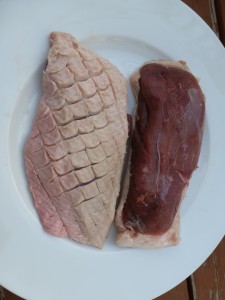 If you spend enough time with culinary types, eventually you’re going to hear some douchebag call a duck breast a magret.
If you spend enough time with culinary types, eventually you’re going to hear some douchebag call a duck breast a magret.
Magret is a term from Gascony, a Basque region of southwestern France. This is the spiritual home of modern foie gras: the liver of ducks and geese that have been forcibly fattened by a process called gavage. The many products and byproducts of these fattened birds form the pillars of the remarkable cuisine of Gascony. For instance, the rendered subcutaneous fat is the main cooking fat in the region, and is used to make confit.
Traditionally, magret refers to the lean portion of a bird that has been fattened for foie and confit, namely … Continue reading.
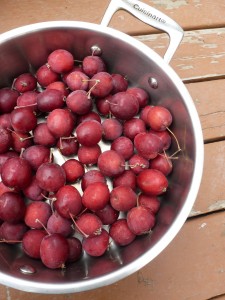 Crabapple is my favourite jelly, hands down. The perfect balance of tart and sweet. A distinct, local flavour sitting in the pantry all year.
Crabapple is my favourite jelly, hands down. The perfect balance of tart and sweet. A distinct, local flavour sitting in the pantry all year.
The following recipe works well for the Dolgo crabapples we get from Lisa’s dad’s backyard. I imagine there is huge variation in sweetness, acidity, and pectin content in crabapples across the region, so I can’t say for certain if this will work for you. But it’s a good base recipe.
For the record, I don’t core the apples. I don’t even stem them. I remove leaves, if I find it convenient. I mash with a fork and strain through a jelly-bag, so the seeds and stems don’t end up in the jelly. Pressing cider with Kevin … Continue reading.
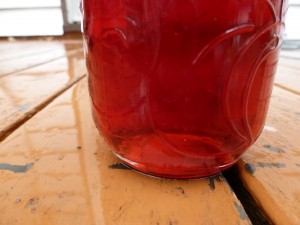 I know: jellies aren’t hip. When I say “fruit jelly” you immediately think of your great aunt, or possibly high tea at the Fairmont Empress. Jellies are stuffy.
I know: jellies aren’t hip. When I say “fruit jelly” you immediately think of your great aunt, or possibly high tea at the Fairmont Empress. Jellies are stuffy.
I love jellies for three reasons: one, they’re tasty and I eat them for breakfast; two, they’re extremely handy to have in the pantry, to stir into sauces or inject into doughnuts; three, they are beautiful, visually and conceptually. Actually they’re a bit like headcheese, conceptually: the cook extracts a natural thickener from the main ingredient, then concentrates it to form a network that gives the food a unique, wobbly texture.
If that piqued your interest even remotely, please, read on.
The Chemistry of Jellies
Lets start at the beginning. Unlike … Continue reading.
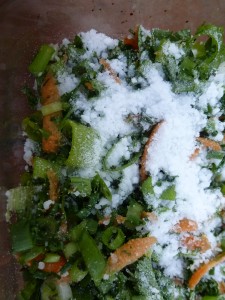 This is a very old-school Québécois way to preserve herbs, onions, carrots… really any manner of aromatic vegetable. They are chopped finely, mixed with salt, left in the fridge for a week, then transferred to a jar. That’s it.
This is a very old-school Québécois way to preserve herbs, onions, carrots… really any manner of aromatic vegetable. They are chopped finely, mixed with salt, left in the fridge for a week, then transferred to a jar. That’s it.
Ingredients. It would be silly to offer a “recipe” as such for herbes salées. You shouldn’t go to a grocery store and buy a set of ingredients; you should use whatever you have in abundance in your herb garden in the late season. There are, however, some useful ratios to keep in mind.
1 part salt for every 3 parts aromatics, by weight. In other words 33 g of salt for every 100 g of herb mix.
In terms … Continue reading.
While the most famous incarnation of this cut of pork is bacon, fresh pork belly has become very popular over the last few years. In the butcher shop it is also called pork side, or side meat. Before I started buying pigs by the side, I ordered slabs of belly from Irvings Farm Fresh, a 5 lb slab costing somewhere around $25.
A Quick Tour of the Pork Belly
Below is a slab of pork belly. You’re looking at the inside of the pig; the opposite side is covered with skin. The right side of this slab would have connected to the front shoulder of the hog. The left side would have connected to the hind leg. The top … Continue reading.
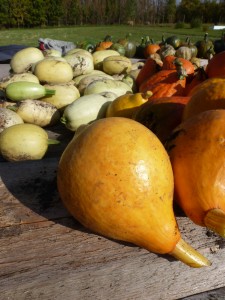 I love pumpkin pie, but there are a few things about the classic preparation that I don’t understand. First and foremost, why we use canned mix when there’s a stack of fresh pumpkins at every grocery store this time of year.
I love pumpkin pie, but there are a few things about the classic preparation that I don’t understand. First and foremost, why we use canned mix when there’s a stack of fresh pumpkins at every grocery store this time of year.
Lisa and I get loads of squash from Tipi Creek every fall, so often we make “squash pie” instead of “pumpkin pie.” Obviously they’re very similar. Hubbard squash, pictured at left, makes fantastic pie, as do butternut, buttercup, and acorn squash.
Using fresh squash allows you to adjust the flavour and colour of the custard. Canned pumpkin is dark like caramel, I assume from a lengthy cook that reduces and browns the flesh (though that’s just a guess… maybe … Continue reading.
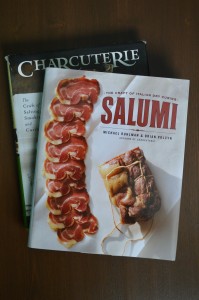 Michael Ruhlman is one of my favourite food writers, and a handful of his books have changed the way I think about food and cooking. I’m convinced that his book Ratio is the single most powerful and pragmatic cookbook ever written. He had a hand in The French Laundry Cookbook, one of the most influential cookbooks of the last twenty years. In his narrative Soul of a Chef he describes the discipline and dedication required to work in kitchens like that of The French Laundry. And of course there is the seminal book Charcuterie, a collaboration between Michael Ruhlman and Brian Polcyn that almost single-handedly started a cured meat revival in restaurants and home kitchens and backyards across … Continue reading.
Michael Ruhlman is one of my favourite food writers, and a handful of his books have changed the way I think about food and cooking. I’m convinced that his book Ratio is the single most powerful and pragmatic cookbook ever written. He had a hand in The French Laundry Cookbook, one of the most influential cookbooks of the last twenty years. In his narrative Soul of a Chef he describes the discipline and dedication required to work in kitchens like that of The French Laundry. And of course there is the seminal book Charcuterie, a collaboration between Michael Ruhlman and Brian Polcyn that almost single-handedly started a cured meat revival in restaurants and home kitchens and backyards across … Continue reading.
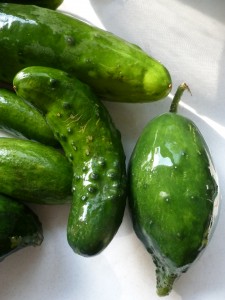 I’m getting closer to my ideal dill pickle. The quest was especially feverish this fall because I had a bit of Montreal-style smoked meat in my fridge.
I’m getting closer to my ideal dill pickle. The quest was especially feverish this fall because I had a bit of Montreal-style smoked meat in my fridge.
Year by year I’ve been making my pickling liquid more and more acidic. I like a sour pickle. This year, I used straight vinegar, without diluting with water. This might sound crazy, but it works. The pickles are a bit too sour immediately after jarring, but let them hang out in the cellar for a month, and they’re prefect. For me, anyways.
I’ve also been engineering the crunch-factor. We all want a very crisp pickle. This year I doused the fresh cucumbers with 5% of their weight in kosher salt, and let them … Continue reading.
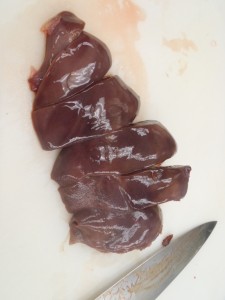 For me, the most shocking part of buying a side of beef was how much liver we got.
For me, the most shocking part of buying a side of beef was how much liver we got.
A lot. I like liver more than most, and I thought it was too much.
If you have to get through a lot of liver, there’s no better way than to just sear it in a pan and tuck in. When the distinct, glandular texture of liver wearies the palate, there are liver dumplings.
This was a staple when I was in Austria. Lunch always consisted of soup, meat, and dessert, and the soup often contained some manner of offal. Most notable were the soft, bready liver dumplings the size of a toddler’s fist, floating in beef broth.
The biggest problem with … Continue reading.